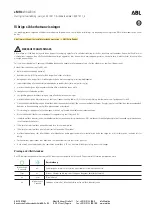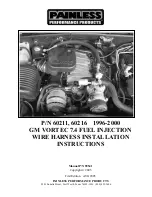
Note:
If you cannot start the engine on the first try, wait for a short
period and try again.
If you have difficulty starting the engine when the temperature is below
-13°F (-25°C), press the accelerator pedal slightly and try again.
Failure to Start
If you cannot start the engine after three attempts, wait 10 seconds and
follow this procedure:
1. Fully press the brake pedal.
2. Fully press the accelerator pedal and hold it there.
3. Start the engine.
Stopping the Engine When Your Vehicle is Stationary
1. Move the transmission selector lever to position
P.
2. Turn the key to the off position.
Stopping the Engine When Your Vehicle is Moving
WARNING:
When you switch off the engine when your vehicle is
still moving, this results in a loss of brake and steering assistance.
The steering does not lock, but higher effort is required. When you
switch off the ignition, some electrical circuits, warning lamps and
indicators may also be off.
1. Move the transmission selector lever to position
N
and use the brakes
to bring your vehicle to a safe stop.
2. When your vehicle has stopped, move the transmission selector lever
to position
P
and turn the key to the off position.
Cold Weather Starting (Flexible Fuel Vehicles Only)
The starting characteristics of all grades of E-85 ethanol make it unsuitable
for use when ambient temperatures fall below 0°F (-18°C). Consult your fuel
distributor for the availability of winter grade ethanol. As the outside
temperature approaches freezing, ethanol fuel distributors should supply
winter grade ethanol (same as with unleaded gasoline). If summer grade
ethanol is used in cold weather conditions, 0°F to 32°F (-18°C to 0°C), you
may experience increased cranking times, rough idle or hesitation until the
engine has warmed up.
You may experience a decrease in peak performance when the engine is
cold when operating on E-85 ethanol.
174
Starting and Stopping the Engine
2014 Expedition
(exd)
Owners Guide gf, 2nd Printing, November 2013
USA
(fus)
















































